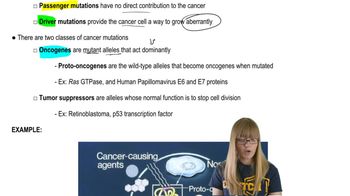In 2010, a U.S. District Judge ruled to invalidate Myriad Genetics' patents on the BRCA1 and BRCA2 genes. Judge Sweet noted that since the genes are part of the natural world, they are not patentable. Myriad Genetics also holds patents on the development of a direct-to-consumer test for the BRCA1 and BRCA2 genes.
Would you agree with the ruling to invalidate the patenting of the BRCA1 and BRCA2 genes? If you were asked to judge the patenting of the direct-to-consumer test for the BRCA1 and BRCA2 genes, how would you rule?
Imagine yourself as one of the team of geneticists who launches a study of the genetic effects of high-energy radiation on the surviving Japanese population immediately following the atom bomb attacks at Hiroshima and Nagasaki in 1945. Demonstrate your insights into both chromosomal and gene mutation by outlining a short-term and long-term study that addresses these radiation effects. Be sure to include strategies for considering the effects on both somatic and germ-line tissues.
 Verified step by step guidance
Verified step by step guidance
Verified Solution
Key Concepts
Chromosomal Mutations

Gene Mutations

Somatic vs. Germ-line Effects

In 2010, a U.S. District Judge ruled to invalidate Myriad Genetics' patents on the BRCA1 and BRCA2 genes. Judge Sweet noted that since the genes are part of the natural world, they are not patentable. Myriad Genetics also holds patents on the development of a direct-to-consumer test for the BRCA1 and BRCA2 genes.
J. Craig Venter has filed a patent application for his 'first-ever human-made life form.' This patent is designed to cover the genome of M. genitalium. Would your ruling for Venter's 'organism' be different from the judge's ruling on patenting of the BRCA1 and BRCA2 genes?
Shown here are the amino acid sequences of the wild-type and three mutant forms of a short protein.
___________________________________________________
Wild-type: Met-Trp-Tyr-Arg-Gly-Ser-Pro-Thr
Mutant 1: Met-Trp
Mutant 2: Met-Trp-His-Arg-Gly-Ser-Pro-Thr
Mutant 3: Met-Cys-Ile-Val-Val-Val-Gln-His _
Use this information to answer the following questions:
Using the genetic coding dictionary, predict the type of mutation that led to each altered protein.
